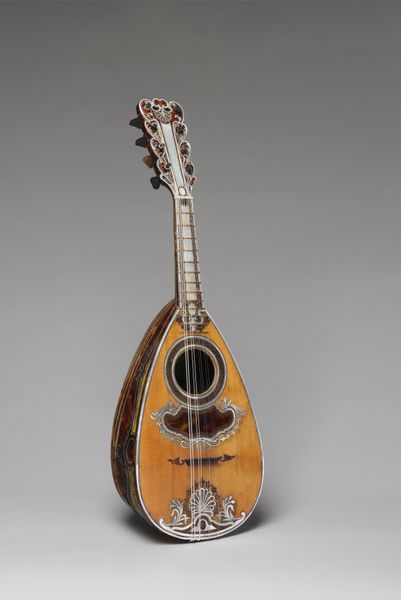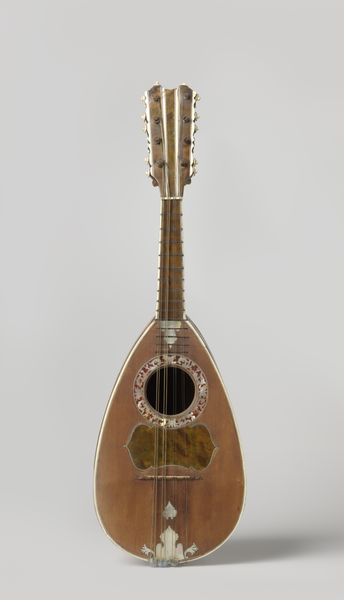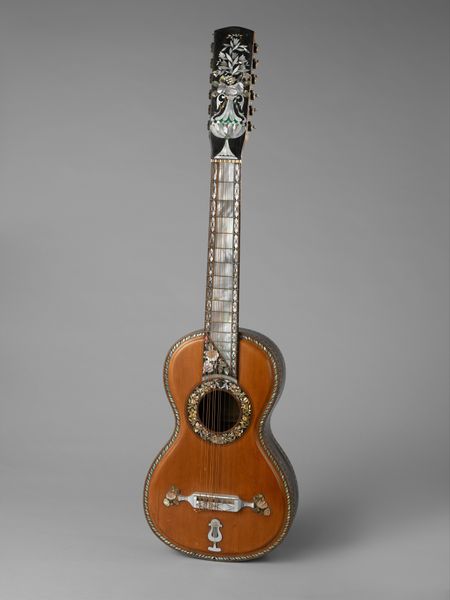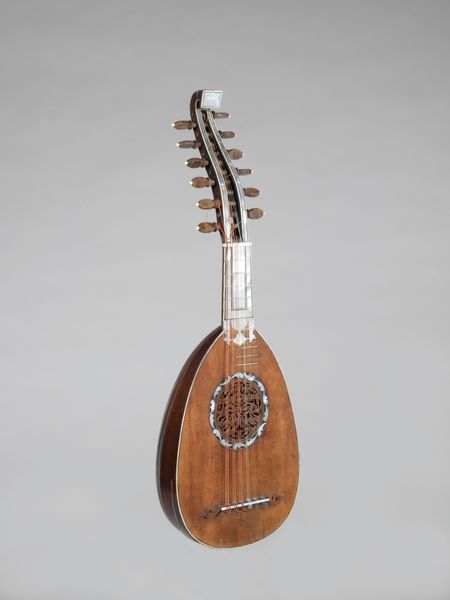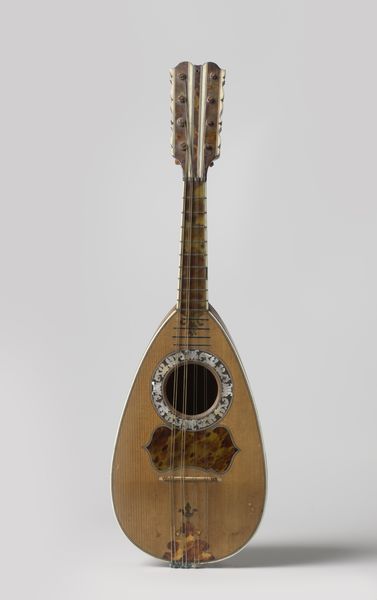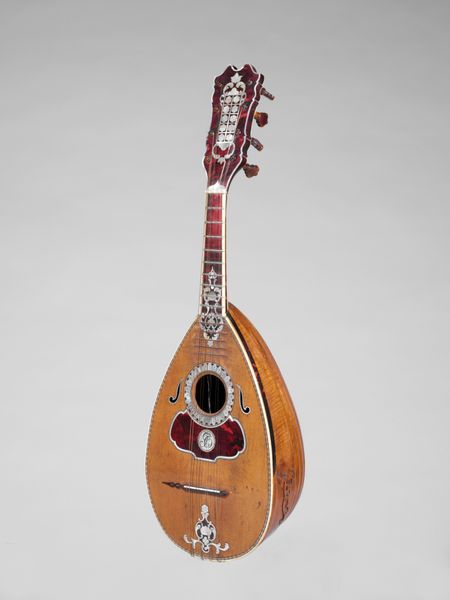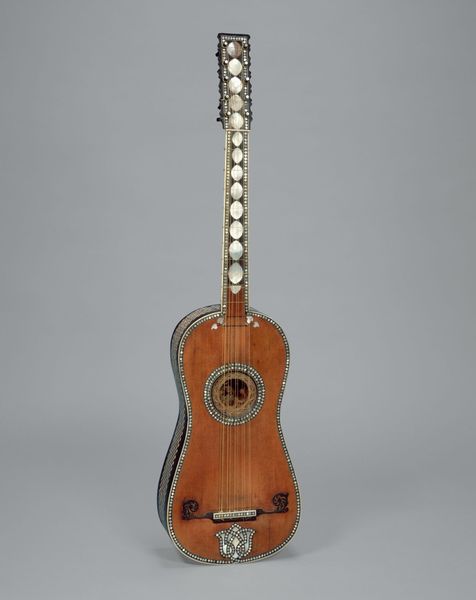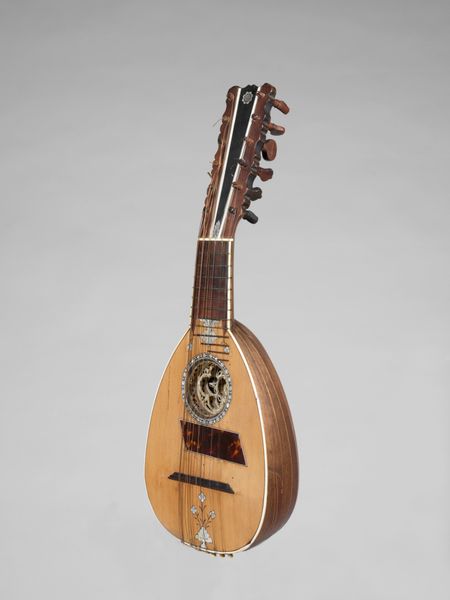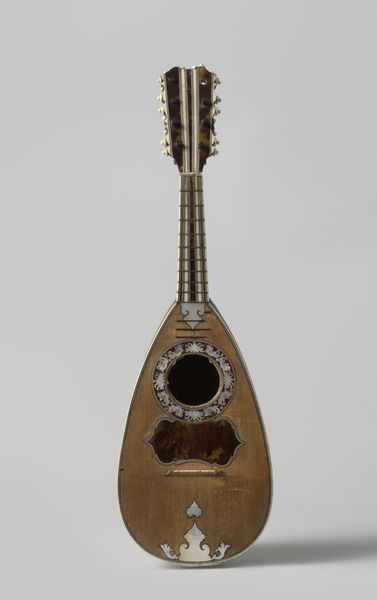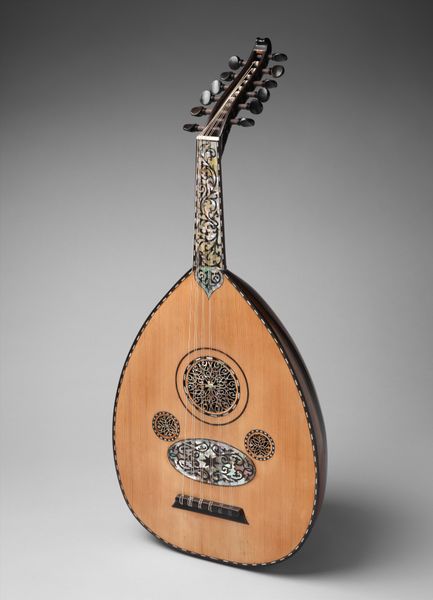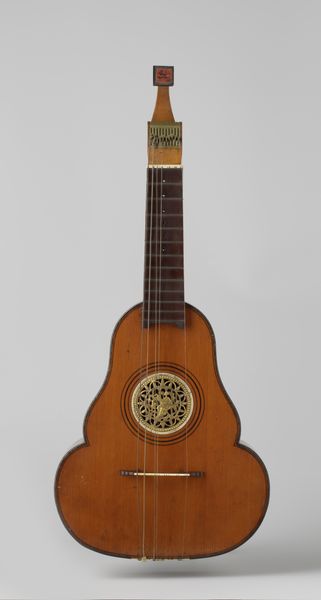
Dimensions: Label: 17.8 x 58.4cm (7 x 23in.)
Copyright: Public Domain
Curator: Looking at this mandolin from the late 18th century, crafted sometime between 1750 and 1790, and attributed to Vincentius Vinaccia, one can’t help but think of the decorative arts flourishing in Naples at the time. Editor: It immediately strikes me as exquisitely detailed. You can see the wood grain clearly, but the inlays, particularly around the soundhole and body, add a striking opulence. The patterns and materials—what exactly are they made from? Curator: Mother-of-pearl, ivory, and ebony are some of the more noticeable materials used in this mandolin. Instruments like these weren’t just for making music; they were displays of wealth and status. Patronage mattered significantly in instrument production back then. Editor: Precisely! We often forget the artisanal labor involved in crafting these "luxury" items. I wonder, who was making these instruments? Were they working in a workshop under a master luthier, and what were the power dynamics within that structure? Who decided on these decorations and materials? Curator: Absolutely. Naples, particularly, saw instrument making become incredibly systematized during this time, with specialized workshops producing everything from simple, student instruments to these highly embellished pieces commissioned by the aristocracy or even royalty across Europe. The Vinaccia family, for example, ran an operation where each artisan would perfect his singular step in the complex construction of the mandolin. Editor: That really changes how we view the instrument; it’s not just a product of individual genius but rather a collaborative outcome, deeply enmeshed with the city's social fabric and economic practices. We need to ask questions of materiality and consumption and consider who benefits from this intricate web of creation and ownership. Curator: I completely agree. This mandolin’s visual character certainly resonates with the broader decorative arts movement, where visual flair held as much value as functionality—if not more! Today, displayed in the Metropolitan Museum, it is interesting to reflect on what it signifies. How has its perceived meaning shifted over the centuries, as an item intended for use versus becoming an object of display? Editor: Thinking of how an object originally handled is now encased within the Met's galleries forces us to acknowledge the politics inherent in archiving the past. It’s also useful to recall the work that is performed when any instrument like this is actually put into service in order to create music, bringing us back again to those people in Naples in the 18th century.
Comments
No comments
Be the first to comment and join the conversation on the ultimate creative platform.
